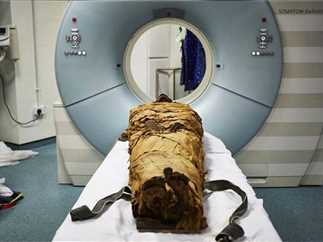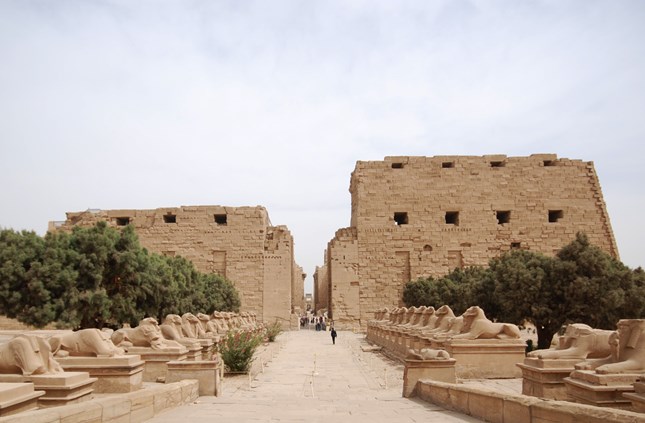
A team of scientists recently announced that they were able to hear the “voice” of a 3,000-year-old Egyptian mummy after reproducing his vocal tract through 3D printing.
The mummy is an ancient Egyptian priest called Nesyamun who lived during the reign of Pharaoh Ramses XI, during the 11th century BC, according to the British newspaper The Telegraph.
The mummy of Nesyamun was in the Leeds City Museum in the UK and was specifically chosen because the soft tissue in the throat and vocal tract was fairly intact.
After reconstructing Nesyamun’s vocal tract digitally, the team managed to reproduce it through 3D printing, enabling them to hear the ancient mummy “speak” for the first time, emitting an “eeuughhh” sound.
Researchers say they’ve mimicked the voice of an Egyptian mummy by recreating some of its vocal tract.
Have a listen…
What does it sound like to you? pic.twitter.com/nSjsCu2f0w
— News Breakfast (@BreakfastNews) January 23, 2020
The vocal tract is responsible for producing speech and other sounds, and includes your larynx, or “voice box,” and vocal cords. The position of different parts of the vocal tract can produce words or other vocalizations, and the sounds produced are unique to each person.
Professor David Howard, head of the electronic engineering department at Royal Holloway, University of London, and co-head of the research team, has said that the sound emitted from the ancient mummy could be from right before his death, which scientists have hypothesized that he had died of strangulation or an allergic reaction caused by an insect bite.
If Nesyamun died of an allergic reaction caused by an insect sting, then his newly discovered “voice” may have caught the last moments of his life, similar to an “Oh!” or “Arg!”.
According to Howard, however, the sound emitted by the ancient mummy is that of Nesyamun lying in his coffin after mummification, according to a report from The Guardian.
He added that Nesyamun’s throat and vocal tract showed that his voice would have been higher-pitched than that of the common man today.
The scientific team also wrote that Nesyamun’s voice must have been loud, as he had to speak, chant hymns or sing as part of his role as a priest at Egypt’s Karnak Temple in Thebes, or modern day Luxor.
Howard has said he is hoping to conduct a second stage of research on Nesyamun’s vocal tract, which could enable scientists to reproduce the sound of the ancient priest singing, according to CNN.
Professor John Schofield, an archaeologist from York University and and co-author of the study, explained that the discovery may contribute to bringing more visitors to the museum or encourage them to make visits to the Karnak Temple in Luxor, Egypt.
He added that the new technology could be applied to other preserved human remains from the Iron Age, both in and outside Denmark.
Salima Ikram, a professor of Egyptology at the American University in Cairo, called the study “surprisingly wonderful”, adding that the research had given a unique view of the past and linked Nesyamun with the 21st century.




